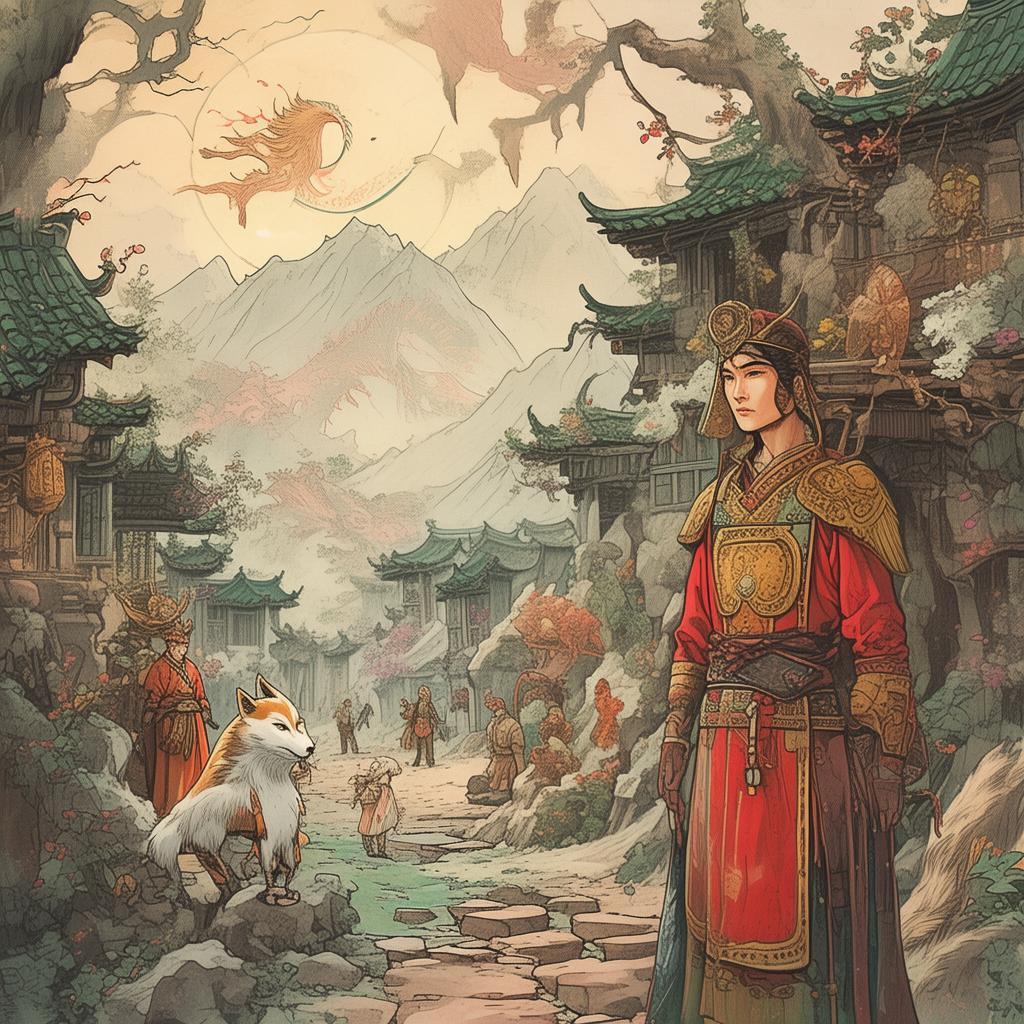The Vanishing Carnival: A Ghostly Reunion
In the heart of a quaint village nestled among rolling hills, the Carnival was a time-honored tradition that brought joy and excitement to the townsfolk. It was a place where the line between the living and the dead blurred, where the spirits of the ancestors could be seen mingling with the laughter of children and the whispers of the wind. But one year, without warning, the Carnival simply vanished. The floats, the rides, the vibrant costumes—all gone, leaving behind only the faintest echoes of the grand spectacle.
In the center of the village stood an old, abandoned fairground, now overgrown with weeds and ivy. It was a place shrouded in mystery and whispered about by the villagers, who spoke of ghostly apparitions and unexplained occurrences. Among these villagers was a young girl named Li, whose grandmother had regaled her with tales of the Carnival's glory days.
One evening, as the sun dipped below the horizon, casting a golden glow over the village, Li stumbled upon a peculiar sight. A figure in a faded Carnival costume stood at the edge of the fairground, gazing into the distance with a melancholic expression. She approached cautiously, her heart pounding with a mix of fear and curiosity.
"Are you real?" Li asked, her voice barely above a whisper.
The figure turned, revealing a woman with piercing eyes and a face etched with the years. "I am the Carnival," she replied in a voice that seemed to resonate with the very essence of the village.
Li's grandmother had always told her that the Carnival was more than just a festival; it was a living tradition, a guardian of the village's soul. The Carnival had been a bridge between the world of the living and the world of the dead, a way for the ancestors to remember and be remembered.
The woman explained that the Carnival was in danger. A malevolent force had sought to extinguish the tradition, erasing the memories of the Carnival and the bond it shared with the ancestors. Li, as the descendant of a Carnival performer, was the key to restoring the tradition.
With the Carnival's disappearance, the ancestors had grown restless, their spirits unable to find peace. Li was to embark on a quest to find the lost Carnival floats, each one representing a different ancestor and their connection to the village.
The first float was hidden in the old mill, where her grandmother had once worked. Inside, Li found an old diary that revealed her ancestor's story, a tale of love, loss, and sacrifice. She learned that the ancestor had given up her own life to save the village from a great disaster.
Next, Li sought out the second float, hidden in the old schoolhouse. There, she discovered a painting of her ancestor as a child, surrounded by the other Carnival performers. The painting held a key to the next clue, a hidden message that led her to the old church.

In the church, Li found the third float, draped in cobwebs and dust. The float's decorations spoke of a grand ball, where the ancestors had danced and celebrated their lives. As Li touched the float, the cobwebs fell away, revealing the faces of her ancestors smiling down at her.
The journey continued, each float revealing more about her ancestors' lives and the role they played in the Carnival. But as the days passed, Li felt the weight of the malevolent force closing in. She knew she had to act quickly.
The final float was hidden in the deepest part of the fairground, behind a thick veil of ivy and vines. Li pushed through the barrier and found the float, now in ruins. But as she reached out to touch it, the ground beneath her feet trembled, and the air grew thick with a strange energy.
Suddenly, the Carnival reappeared, its floats and performers returning as if by magic. The ancestors emerged, their spirits restored and ready to protect the tradition once more. Li had done it; she had saved the Carnival and her ancestors.
The Carnival was back, and with it, the joy and unity that had once been lost. The villagers celebrated, their hearts filled with gratitude for Li's bravery and determination. And as the Carnival came to a close, Li stood among her ancestors, her eyes filled with tears of joy and relief.
In the days that followed, the Carnival became a symbol of the village's resilience and the enduring bond between the living and the dead. Li's story was told and retold, a tale of courage and tradition that would never be forgotten.
And so, the Carnival continued, a beacon of hope and a reminder of the power of love, sacrifice, and memory. For as long as the Carnival existed, the spirits of the ancestors would continue to watch over the village, their legacy alive and well in the hearts of all who believed in the magic of the Carnival.
✨ Original Statement ✨
All articles published on this website (including but not limited to text, images, videos, and other content) are original or authorized for reposting and are protected by relevant laws. Without the explicit written permission of this website, no individual or organization may copy, modify, repost, or use the content for commercial purposes.
If you need to quote or cooperate, please contact this site for authorization. We reserve the right to pursue legal responsibility for any unauthorized use.
Hereby declared.









